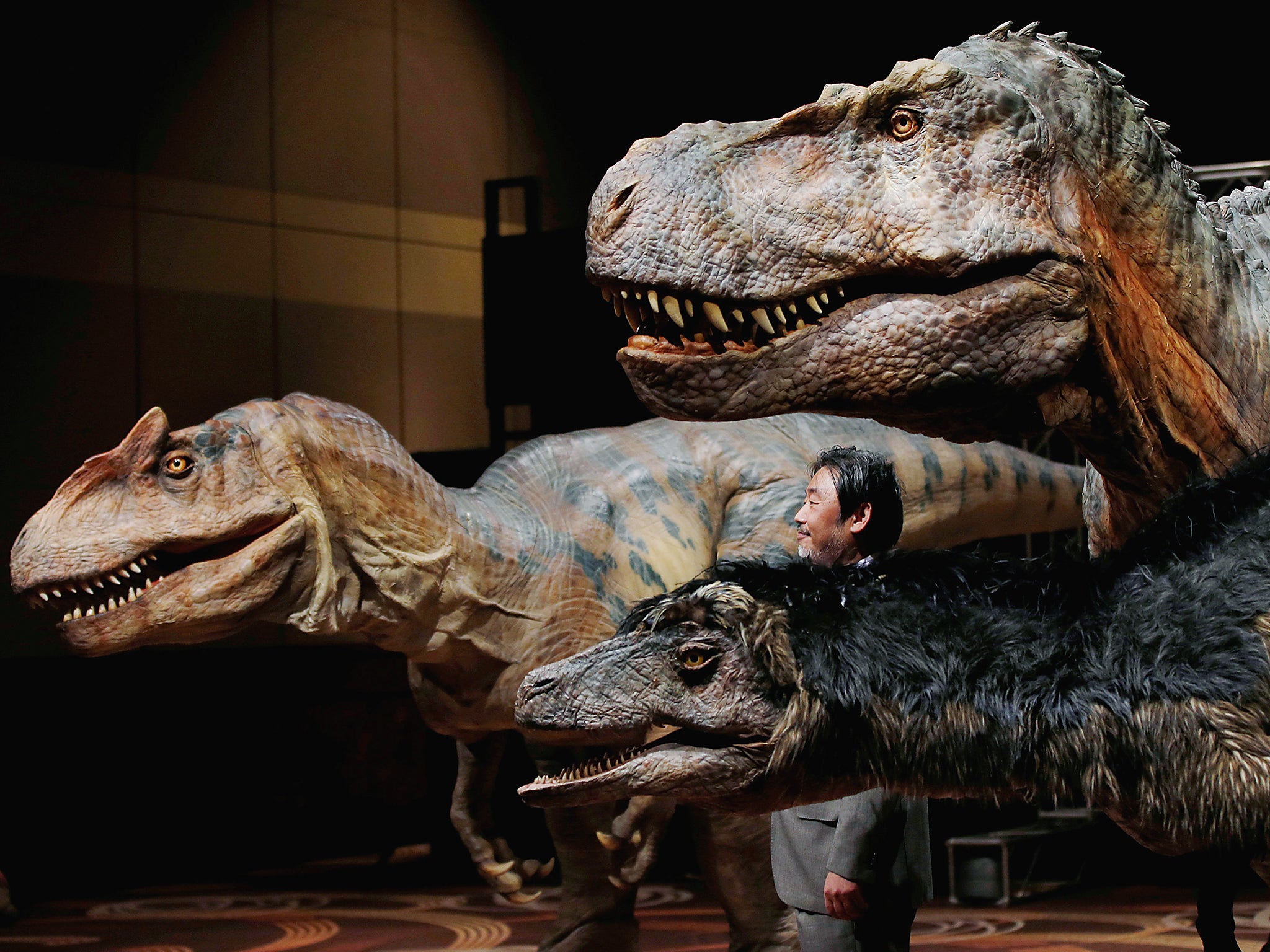Dinosaur family tree completely re-written by new model that proposes they began far earlier than we thought
If correct, the new proposal re-writes the entire history of the dinosaurs

Your support helps us to tell the story
From reproductive rights to climate change to Big Tech, The Independent is on the ground when the story is developing. Whether it's investigating the financials of Elon Musk's pro-Trump PAC or producing our latest documentary, 'The A Word', which shines a light on the American women fighting for reproductive rights, we know how important it is to parse out the facts from the messaging.
At such a critical moment in US history, we need reporters on the ground. Your donation allows us to keep sending journalists to speak to both sides of the story.
The Independent is trusted by Americans across the entire political spectrum. And unlike many other quality news outlets, we choose not to lock Americans out of our reporting and analysis with paywalls. We believe quality journalism should be available to everyone, paid for by those who can afford it.
Your support makes all the difference.Forget everything you think you know about dinosaurs. Or almost.
The dinosaur family tree has been completely shaken up by a radical new computer programme. Scientists have turned our understanding of dinosaur evolution “upside down” and re-written the evolutionary history of dinosaurs.
Theropods like the T Rex have moved to a completely new branch of the family tree, for instance. And dinosaurs in general might have appeared much earlier – and more north – than was thought in the past.
The proposed new family tree includes two reformulated categories, or clades, of dinosaurs to replace the existing two. The research also pushes dinosaur origins back to relatively soon after a mass extinction that rocked the Earth 252 million years ago.
The new family tree makes much more sense, according to Matt Baron, a paleontology doctoral student at the University of Cambridge and lead author of the study in Wednesday’s journal Nature. The old one was designed more than a century ago and focused on hip shape.
“If the authors are correct, this really turns our longstanding understanding of dinosaur evolution upside down!” Kristi Curry Rogers, a paleontologist at Macalaster College in Minnesota said.
Dinosaurs are split into two groups. One group has bird-like hips and is called Ornithischia (or-ni-THISS’-kee-a) and includes the stegosaurus, while the other group has reptile-like hips and is called Saurischia (saw-RIS'-kee-a). It includes the brontosaurus.
Theropods, which include the T Rex and the type of dinosaurs that later evolved into modern day birds, were considered an offshoot from the group that includes the brontosaurus. The new study moves them to the group that includes the stegosaurus, but on a different branch.
“It means that animals that we’ve always thought were very closely related to each other might not be,” said Rogers, who praised the study, adding that it prompts a whole bunch of new questions.
Baron and colleagues looked at 450 characteristics of 75 dinosaur species. They used computer simulations to try to group together those with similar characteristics, creating tens of thousands of potential dinosaur family trees. The proposed new family tree combines the 80 most likely scenarios, he said.
It may sound like an academic exercise, but it’s important to understand how big animals changed with time, Baron said, noting that the dinosaurs ruled Earth for more than 150 million years.
His research suggests that dinosaurs popped up 247 million years ago – 10 million years earlier than the standard theory suggests – with a dinosaur from Tanzania in East Africa called Nyasasaurus, which was 6 to 10 feet tall and a plant-eater.
He also found a reptilian ancestor – not quite a dinosaur, but as close as you can get. And it was in Scotland. Previous theories pointed to dinosaurs first evolving outside of the Southern Hemisphere and many scientists said there wasn’t enough evidence to support Baron’s northern concept.
The paper is already dividing dinosaur experts. Paul Sereno, professor of paleontology at the University of Chicago and National Geographic “explorer-in-residence” who has discovered several new species on different continents, called the basis of the Baron family tree “weak” and said “the central question the paper leaves unanswered for me is: why?”
Matthew Carrano, dinosaur curator at the Smithsonian Natural History Museum, said it’s hard to side with any theory because early dinosaur fossil records are so incomplete.
Join our commenting forum
Join thought-provoking conversations, follow other Independent readers and see their replies
Comments